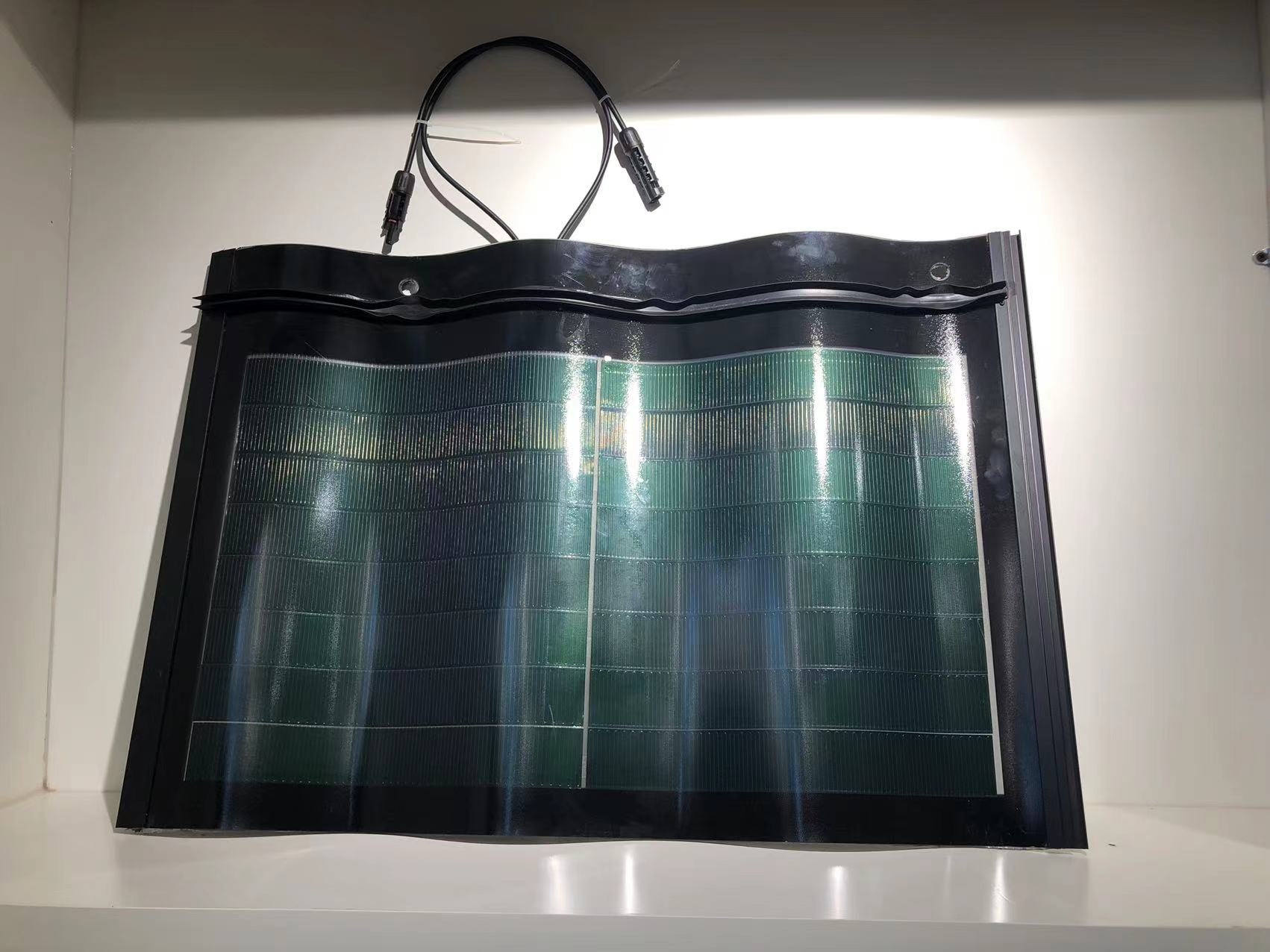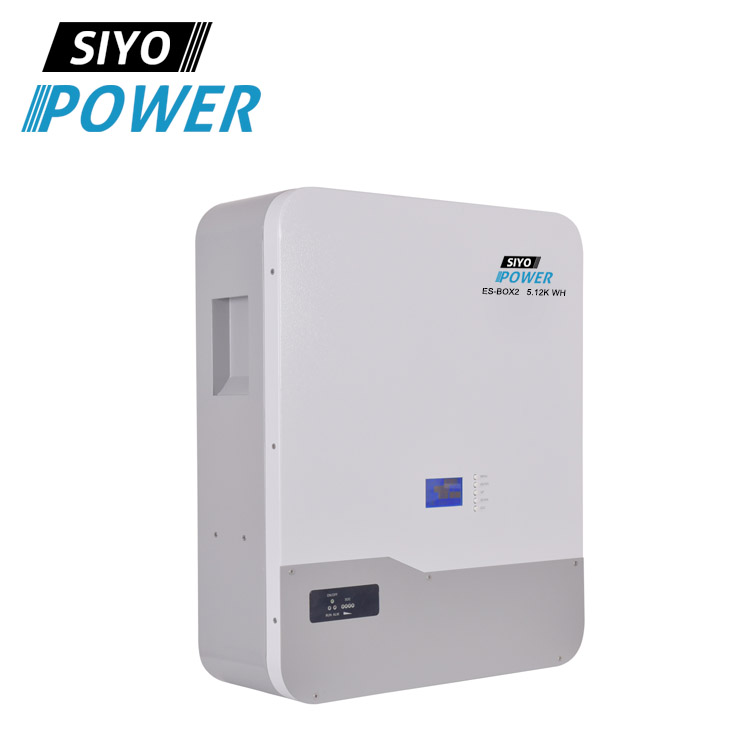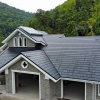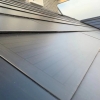Solar Shingles Buying Guide
Harnessing the power of solar energy is not only good for the environment, but it’s also good for your wallet. While roof panels are what often come to mind, solar shingles are another option for homeowners seeking to add value to their properties.
What Are Solar Shingles?
Solar shingles, or solar roof tiles, are made of slim photovoltaic (PV) sheets that either overlay or replace the existing shingles on a roof. They absorb sunlight and convert it into electricity. By relying on this method of energy as opposed to electricity, for example, homeowners will save money on monthly bills and eventually recoup their initial investments.
Like regular roof shingles, solar shingles protect your home from the weather and other elements. These shingles are not only energy-efficient, but they also offer a more attractive aesthetic to a home than do the large, bulky panels normally associated with solar-powered energy.
Solar Roof Shingles vs. Solar Roof Panels
Solar shingles work in a similar way to solar panels—they both absorb the sun’s rays, converting the light to thermal or electrical energy. However, there are a few important differences between solar panels and shingles that you should know about when determining your home’s solar energy needs:
Size
Solar shingles are about the same size as traditional roofing shingles, with the average size being about 12 inches wide by 86 inches long, and weighing about 13 pounds per square foot. The thin tiles are less than an inch in thickness. It takes about 350 tiles to complete a typical solar roof installation.
Materials
Solar shingles are typically made from copper indium gallium selenide, which is what allows them to be so flexible and thin. This semiconductor is an ideal material as it results in a high conversion efficiency rate, which is about 10% to 12% on average. Some shingles, instead, use monocrystalline silicon, which is also used to fabricate computer chips. While these are more expensive, they are worth the extra price as they have a higher efficiency rate of around 15% to 20%.
Output
As the primary goal is to lower energy costs, this is a major consideration with solar installation. The majority of shingles will produce anywhere between 13 and 63 watts of power. The number of tiles in a typical home roof installation can lower the utility bill by 40% to 70%; by adding more tiles, you can increase the energy output.
While both solar shingles and solar panels convert the sun’s rays into energy, there are a number of differences that will help you decide between the two options:
Appearance
Since solar shingles blend right into the roofing materials, such as concrete or asphalt, many prefer this aesthetic rather than large black panels attached to the roof. In general, solar shingles create a sleeker aesthetic than do bulky solar panels, particularly since only parts of the roof, like the edging, might be covered in shingles to be efficient.
Service Life
Both solar panels and shingles have long life spans, typically upwards of 20 years. However, the longevity of solar shingles varies by the manufacturer and the installation. Warranties also vary; when you purchase solar shingles, be sure that you note the difference between power warranties. Solar shingle warranties can last for a couple of decades based on their production, while durability warranties that cover the shingles themselves can span the lifetime of the home.
Efficiency
Solar shingles are outshined by panels in terms of efficiency for a number of reasons. While solar panels can be adjusted as needed to achieve the best angle to capture the sun’s rays, shingles stay in the same place as they were first installed. You can always add more shingles to the roof to harness more energy, but as with all home improvement projects, more materials mean more money.
Installation
Solar shingles can take as much as a week to install—and that’s if your existing roof is in good shape. If you are building or redoing your roof before adding solar shingles, it can take even longer. Some solar tile manufacturers, like Tesla, will take two or more weeks to install.
This is in sharp comparison to solar panels, which can be installed within a day.
Durability
Solar shingles have one major advantage to panels: They are more durable. Unlike panels, which sit atop the roof, solar roof tiles are actually part of the roof. As such, they are more resilient and can stand up to harsh weather conditions and fallen debris. Additionally, solar shingles are fire-resistant, a feature that is not inherent in solar panels. (It should be noted, however, that the risk for fire with solar panels is very low.)
Cost
Solar shingles can be on the pricier side depending on how much square footage you need to cover and which types you’d like to get. It’s important to understand your budget before opting into a solar shingle project.
Solar Shingles Cost
Solar shingles typically cost more than solar panels because of the amount of materials needed for installation. The average price of solar roof tiles ranges from $15,000 to $20,000, but Tesla shingles could cost more than $70,000, along with a lengthy installation period. However, the ultimate cost of solar shingles depends on the size of the roof, the energy needs of your household and the manufacturer and installer of the shingles you have chosen.
Solar Shingles Cost Per Square Foot
When considering the installation of solar shingles, it’s important to understand the costs associated with this innovative roofing solution. Solar shingles not only provide the functionality of traditional roofing materials but also generate electricity, offering long-term savings on energy bills. The price per square foot for solar shingles can vary depending on factors such as the brand, roof pitch and installation complexity. However, the average cost per square foot for solar shingles typically ranges from $21 to $25. While if you buy directly from supplier from China, it will be lower costs.
Pros and Cons of Solar Shingles
Here is a rundown of the advantages and disadvantages of solar shingles for your home:
Pros
- Shingles have a sleeker, more attractive aesthetic. They integrate well with concrete and asphalt roofs in particular.
- They are weather-resistant and durable.
- They are easier to maintain than solar panels.
- They are cost-effective if you are building a new roof
Cons
- While solar panels have been around for quite a while, solar shingles are young by comparison. Therefore, not every solar manufacturer offers them.
- The technology is still evolving as well. Not all existing roofs are conducive to solar shingle installation—you might have to rebuild the entire roof.
- They are more expensive than solar panels.
- They are currently limited in style and colors, though we are introducing new options.
How Many Solar Shingles Do You Need?
To learn how many solar shingles are needed to power a house, you’ll use a formula with key factors like the size of your house and your typical energy usage. Since you can integrate solar shingles into your existing roof, the amount of solar shingles you’ll need depends on how large your roof is and how much you’d like to save on your electricity bill: the more shingles, the more energy output.
How Long Do Solar Shingles Last?
Solar shingles are designed to offer both durability and efficiency, making them an attractive option for homeowners looking to invest in renewable energy solutions. The lifespan of solar shingles can vary based on the manufacturer, the materials used and the installation quality. Generally, solar shingles have a lifespan ranging from 20 to 30 years. Here are a few more factors that can influence the longevity of your solar shingles:
- Material quality: High-quality materials like monocrystalline silicon can extend the life of solar shingles, offering better efficiency and durability.
- Installation: Proper installation by certified professionals ensures that solar shingles are securely attached and optimally positioned, which can enhance their longevity.
- Maintenance: Regular maintenance, including cleaning and inspections, helps keep solar shingles in good condition and prevents issues that could shorten their lifespan.
- Environmental conditions: Harsh weather conditions, such as heavy snowfall, hail or extreme temperatures, can affect the lifespan of solar shingles. However, most solar shingles are designed to withstand various weather conditions.
Are Solar Shingles Worth It?
The decision to invest in solar shingles depends on several factors, making it a potentially worthwhile option in some scenarios and less so in others. For homeowners prioritizing aesthetics and seeking a seamless integration with their roof, solar shingles offer a visually appealing alternative to traditional solar panels. They may be particularly valuable in areas with abundant sunlight, allowing for significant energy savings and potential increases in property value. However, the higher initial cost compared to traditional roofing materials and solar panels might be a deterrent for some. Additionally, if your roof doesn’t receive optimal sunlight or if you plan to move in the near future, the long-term financial benefits may not be as impactful. Assessing your specific energy needs, budget and long-term plans can help determine if solar shingles are the right choice for your home.
Go and get a sales from Siyopower to make a calculation for you!










